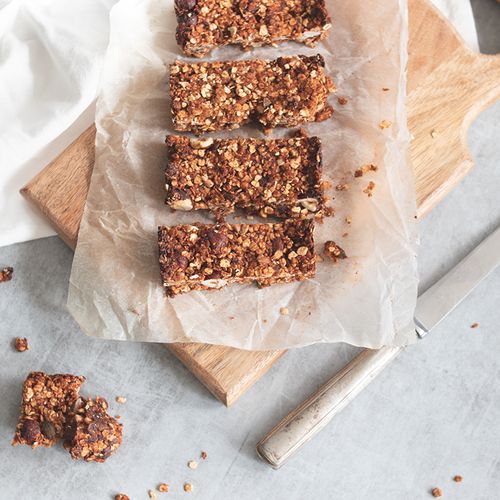Energy bars are supposed to provide a A quick-yet-nutritious boost. But while certain bars are tasty and good for you, others are unpleasant to eat or not healthful.
Some contain more calories than we really need-often upward of 300. Many have excessive sugars—anything above 15 grams is too much.
You'll find heavily processed and artificial ingredients in some, including aspartame, soy protein isolates, whey concentrate, isoflavones, hydrolyzed collagen and hydrolyzed gelatin, which don't deliver as much nutritional value as unprocessed and natural ingredients.
The most healthful and delicious energy bars, all of which generally cost between $1.40 and $3 per bar…
Best high-fiber bar: Gnu Bar. One bar has 12 grams of fiber-almost half of our daily fiber needs. Unlike many high-fiber snacks, it doesn't have a "cardboardy" consistency. Gnu is among the lowest-calorie full-sized energy bars on the market-130 to 140 calories per bar. www.gnu foods.com.
Drawbacks: Going from a low-fiber diet directly to a high-fiber diet can cause digestive distress. Start with just half a Gnu Bar a day if you do not currently eat many high-fiber foods.
Best meal-replacement bar: ProBar. These taste great, and they're made from healthful ingredients such as dried fruits, nuts, seeds and rolled grains. At 370 to 390 calories, they're much too filling for a snack, but they occasionally can replace part of breakfast or lunch when you are in a hurry, www.theprobar.com.
Downside: ProBar's eight to 12 grams of protein are low for a full meal. If possible, supplement a ProBar with a few spoonfuls of Greek yogurt.
Best pre-or postworkout bar: Picky Bar. This has the ideal ratio of carbs to protein4:1—to prepare the body for a strenuous workout or help it recover. www.pickybars.com
Downside: Picky Bar's 22 to 23 grams of sugar are acceptable before or after a workout—our bodies consume simple sugars when we exercise—but excessive at other times.
Best energy bar that tastes like dessert: Kookie Karma. A cross between a cookie and a bar, this round-shaped snack is made from healthful ingredients such as nuts, seeds and fruit. www.kookiekarma.com.
Downside: Some varieties contain xylitol, a natural sugar alcohol that can cause gastrointestinal distress.
Best savory energy bar: Savory Bar. While most bars strive to taste like dessert, Savory Bar comes in grown-up flavors such as Rosemary, Sesame, Spicy and Everything (which features sesame, poppy, onion and garlic flavors). Savory Bars have a crunchy, cracker-like consistency. www.sheffafoods.com
Downside: With just four grams of protein and only 140 to 150 calories, a Savory Bar might not be sufficient to tide you over until mealtime. Consider pairing one with a healthful protein such as cottage cheese.
Best energy bar that's very widely available: Kind Bar. This simple, healthful, nut-based bar can be found in many convenience stores, supermarkets and Starbucks. With as much as seven grams of protein and five grams of fiber, and 10 to 13 grams of sugar for most varieties, it's a healthier choice than other very widely distributed bars, including PowerBars, which have as much as 30 grams of sugar, and Luna Bars, which feature heavily processed ingredients such as soy protein isolates, www.kindsnacks.com.
Build More Muscle with Chocolate Milk
Rest drink after a workout—chocolate milk. When consumed immediately after a workout, low-fat chocolate milk helps athletes build more muscle than a comparable high-carbohydrate sports drink. Drinking chocolate milk also leads to faster muscle recovery and better subsequent workouts.
Also: Individuals who drank chocolate milk immediately after cycling five days a week over four weeks had twice as much improvement in their maximum oxygen uptake—an indicator of cardiovascular fitness—as individuals who drank calorie-free beverages or a carbohydrate sports drink.
